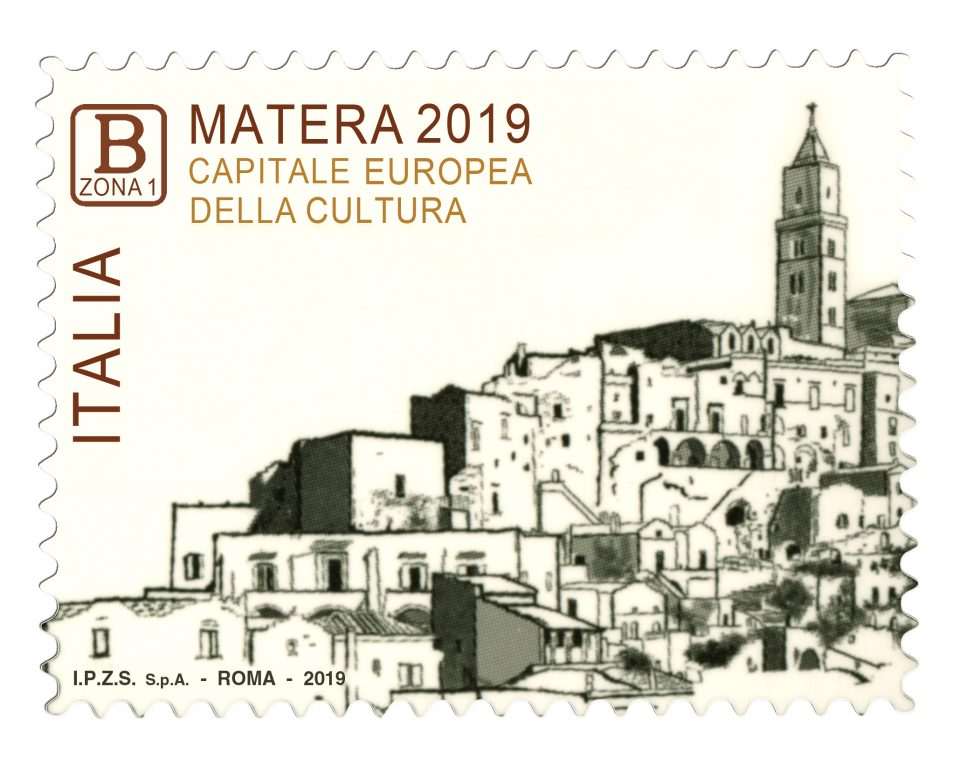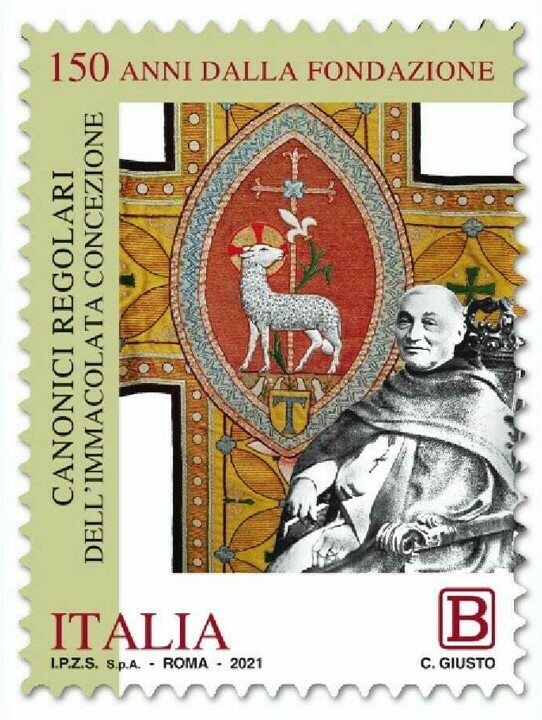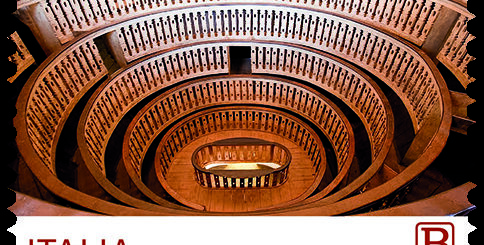POSTE ITALIANE 8^ emissione anno 2019 “francobollo celebrativo Matera Capitale Europea della Cultura”

Il Ministero ha emesso il 4 marzo 2019 un francobollo celebrativo di Matera capitale europea della cultura, relativo al valore della tariffa B zona1 (€ 1.15).
La città di Matera è la capitale europea della cultura nel 2019, insieme a Plovdiv in Bulgaria.
Dopo Genova capitale europea della cultura nel 2004, Matera è la successiva città italiana ad ospitare la manifestazione. Il motto è Open future.
Storia della designazione di Matera
Candidata nel 2008, Matera è stata designata il 17 ottobre 2014 Capitale europea della cultura per il 2019. È la prima città dell’Italia meridionale a ricevere questo riconoscimento, ottenuto dopo essere entrata in una shortlist che comprendeva le candidature di altre 5 città italiane (Cagliari, Lecce, Perugia, Ravenna, Siena). Il verdetto è stato comunicato da Steve Green, presidente della Giuria internazionale di selezione composta da 13 membri (sei italiani e sette stranieri), al Ministro dei beni e delle attività culturali e del turismo (Mibact) ; lo slogan scelto da Matera per la sua candidatura è stato “Open Future”. Il 30 maggio 2018, la Fondazione Matera-Basilicata 2019 che gestisce lo sviluppo del dossier di candidatura di Matera capitale europea della cultura per il 2019, vince il premio Melina Merkourī (ideatrice delle capitali europee della cultura), assegnatogli dalla giuria internazionale di selezione europea.
Il logo ufficiale di “Matera capitale europea della cultura per il 2019”, disegnato da Ettore Concetti, riporta forme geometriche quadrate e rettangolari di diversa dimensione e gradienti del medesimo colore. A partire dal 2018 ha sostituito il vecchio logo utilizzato già in fase di candidatura, che rappresentava i cunicoli scavati nel tufo che diventano una W (la rete) e una M (Matera).
Matera è un comune italiano di 60.000, capoluogo dell’omonima provincia e seconda città della Basilicata. La città si trova nella parte orientale della Basilicata a 401 m s.l.m., sorge proprio al confine tra l’altopiano delle Murge ad est e la fossa Bradanica ad ovest, solcata dal fiume Bradano. Il corso di questo fiume è sbarrato da una diga, costruita alla fine degli anni cinquanta per scopi irrigui, ed il lago artificiale creato dallo sbarramento, chiamato Lago di San Giuliano, fa parte di una riserva naturale regionale denominata Riserva Naturale di San Giuliano.
Il torrente Gravina di Matera, affluente di sinistra del Bradano, scorre nella profonda fossa naturale che delimita i due antichi rioni della città: Sasso Barisano e Sasso Caveoso. Sull’altra sponda c’è la Murgia, protetta dal Parco Regionale Archeologico Storico Naturale delle Chiese Rupestri, più semplicemente detto Parco della Murgia Materana. Gli antichi rioni chiamati “Sassi”, assieme con le cisterne ed i sistemi di raccolta delle acque, sono la caratteristica peculiare di Matera. Si tratta di originali ed antichi aggregati di case scavate nella calcarenite, a ridosso di un profondo burrone, la “Gravina”. Alla fine del 1993 l’UNESCO ha dichiarato i rioni Sassi Patrimonio Mondiale dell’Umanità. Nelle campagne presso Timmari vi è inoltre un vulcano di fango di nuova formazione.
Nota con gli appellativi di “Città dei Sassi” e “Città Sotterranea“, è conosciuta in tutto il mondo per gli storici rioni Sassi, che fanno di Matera una delle città ancora abitate più antiche al mondo. I Sassi sono stati riconosciuti il 9 dicembre 1993, nell’assemblea di Cartagena de Indias (Colombia), Patrimonio dell’umanità dall’UNESCO, primo sito dell’Italia meridionale a ricevere tale riconoscimento.
Le origini di Matera sono molto remote e ne è testimonianza il ritrovamento nel territorio circostante di alcuni insediamenti senza soluzione di continuità sin dall’età paleolitica. Infatti nelle grotte sparse lungo le Gravine materane sono stati ritrovati diversi oggetti risalenti a quell’epoca, testimonianti la presenza di gruppi di cacciatori. Nel periodo Neolitico gli insediamenti diventarono più stabili, tanto che sono presenti tracce evidenti di diversi villaggi trincerati che risalgono a quel periodo, in particolare sulla Murgia Timone. Con l’Età dei metalli nacque il primo nucleo urbano, quello dell’attuale Civita, sulla sponda destra della Gravina. Sorta su un preistorico villaggio trincerato, questa, ha probabili origini greche, come afferma il Volpe nelle sue Memorie storiche profane e religiose sulla città di Matera.
Se sei interessato ad acquistare questo francobollo, lo puoi acquistare al prezzo di € 1.50. Inviami una richiesta alla email: protofilia1@gmail.com
If you are interested in buying this stamp, you can buy it for € 1.50. Send me a request to the email: protofilia1@gmail.com
Set Italian 8 ^ issue year 2019 “commemorative postage stamp European Matera Capitale of the Culture”

The city of Matera is the European capital of the culture in 2019, together with Plovdiv in Bulgaria.
After European capital Genoa of the culture in 2004, Matera is the following Italian city to entertain the demonstration. The witticism is future Open.
History of the designation of Matera
Run in 2008, Matera has been designate on October 17 2014 Capital European of the culture for the 2019. it is the first city of southern Italy to receive this recognition, gotten after having entered a shortlist that understood the candidacies of other 5 Italian (Cagliari, Lecce, Perugia, Ravenna, Siena) cities. The verdict has been communicated by Steve Green, president of the international Jury of selection composed by 13 members (six Italian and seven foreigners), to the Minister of the goods and the cultural activities and of the tourism (Mibact); the slogan chosen by Matera for its candidacy has been “Open Future.” May 30 th 2018, the Foundation Matera-Basilicata 2019 that it manages the development of the dossier of candidacy of European capital Matera of the culture for 2019, it wins the Melina Merkour prize. (inventor of the European capitals of the culture), assigned him by the international jury of European selection.
The official logo of “European capital Matera of the culture for 2019”, drawn by Ettore Concetti, it brings square and rectangular geometric forms of different dimension and gradients of the same color. Beginning from 2018 you/he/she has replaced the old logo already used in phase of candidacy, that represented the burrows dug in the tufo that you/they become a W (the net) and a M (Matera).
Matera is an Italian commune of 60.000, chief town of the homonym province and second city of the Basilicata. The city is found in the oriental part of the Basilicata to 401 ms s.l.m., it rises really to the border among the highland of the east Murge and the pit west Bradanica, ploughed by the river Bradano. The course of this river is blocked from a dike, built at the end of the fifties for irrigated purposes, and the artificial lake created by the obstruction, called Lake of St. Giuliano, it belongs to a reserve natural regional denominated Natural Reserve of St. Giuliano.
The stream Gravina of Matera, tributary of left of the Bradano, flows in the deep natural pit that delimits the two ancient neighborhoods of the city: Stone Barisano and Stone Caveoso. On the other bank there is the Murgia, protected by the Park Regional Archaeological Natural Historian of the Rocky Churches, more simply said Park of the Murgia Materana. The ancient called neighborhoods “Stones”, together with the cisterns and the systems of harvest of the waters, I am the peculiar characteristic of Matera. It deals with original and ancient aggregate of houses dug in the calcarenite, behind a depth canyon, her “Gravina.” At the end of 1993 the UNESCO has declared the neighborhoods Stones World Patrimony of the humanity. In the countries near Timmari there is besides a volcano of mud of new formation.
Note with the appellatives of “City of the Stones” and “Underground City”, it is known all over the world for the historical neighborhoods Stones, that still make of Matera one of the more ancient inhabited cities to the world. The Stones have been recognized December 9 th 1993, in the meeting of Cartagena de Indias (Colombia), Patrimony of the humanity from the UNESCO, first site of southern Italy to receive such recognition.
The origins of Matera are very remote and it are testimony of it the recovery in the surrounding territory of some installations without solution of continuity since the age paleolitica. In fact in the shed caves long Burden her of it materane I/you/they have been found again different going up again objects to that epoch, testifying the presence of groups of hunters. In the period Neolitico the installations became more stable, so much that I/you/they are present evident traces of different villages entrenched that they go up again to that period, particularly on the Murgia Timone. With the age of the metals the first urban nucleus was born, that of the actual Civita, on the right bank of the Gravina.Risen on a prehistoric entrenched village, this, has probable origins Greek frets, as he/she affirms the Fox in his/her profane and religious historical Memories on the city of Matera.
Se sei interessato ad acquistare questo francobollo, lo puoi acquistare al prezzo di € 1.50. Inviami una richiesta alla email: protofilia1@gmail.com
If you are interested in buying this stamp, you can buy it for € 1.50. Send me a request to the email: protofilia1@gmail.com

- data/date 04 Marzo 2019
- dentellatura/serration 11
- stampa/printing fustellatura/rotocalco
- tipo di carta/paper type bianca patinata neutra
- stampato I.P.Z.S. Roma
- tiratura 2.500.000
- fogli/sheet 45
- dimensioni/dimension 40 x 30 mm
- costo/price B1= €1.15
- num. catalogo / catalog num. Michel 4093 YT 3854 UN3936






